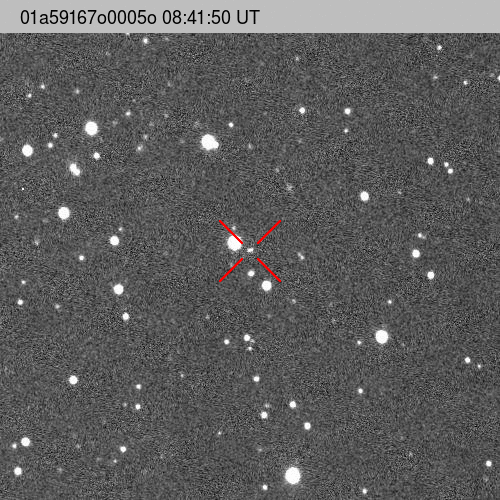Wow. A low-flying space rock set a record last Friday (appropriately, the 13th), when 2020 VT4 passed just under 400 kilometers (250 miles) over the Southern Pacific.
The asteroid was spotted by the Asteroid Terrestrial-impact Last Alert System (ATLAS) survey at the Mauna Loa Observatory in Hawaii in the early morning hours of Saturday, November 14, just 15 hours after approach. This is not uncommon for fast-movers, especially asteroids that are coming at the Earth from our sunward blind-spot, like 2020 VT4.
Newly-discovered asteroid A10sHcN approached Earth yesterday, passing only a few hundred miles above the South Pacific Ocean. This encounter shortened its orbit, ensuring that this Earth-crosser will make more frequent close approaches.https://t.co/TmkzojIzPf pic.twitter.com/XrnKiiGTyJ
— Tony Dunn (@tony873004) November 14, 2020
The asteroid- 2020 VT4 is estimated to be 5-10 meters (16-32 feet) across, about the size of a small house. Earth juuust missed occupying the same space as the perihelion point for the asteroid, which occurred just 20 hours prior to Earth passage.
This sets a record for the closest documented non-meteoric asteroid pass versus the Earth. This record was already broken once this year, with the passage of asteroid 2020 QG 3,000 kilometers (1,864 miles) from the surface of the Earth on 16 August.
A brilliant bolide was captured on video on the afternoon of 10 August 1972, as it became a brilliant daytime fireball over the Grand Teton Mountains in Wyoming before skipping back out of the Earth's atmosphere.
Another recent record was set in October 2008, when astronomers spotted 4-meter (13 foot) asteroid 2008 TC3 19 hours prior to impact, and later recovered fragments in the Nubian Desert in northern Sudan two months later, making 2008 TC3 the first asteroid that was documented before and after impact.
 Discovery images of asteroid 2020 VT4. (ATLAS/Larry Denneau)
Discovery images of asteroid 2020 VT4. (ATLAS/Larry Denneau)
Unfortunately, the close passage of asteroid 2020 VT4 seems to have gone unwitnessed; closest approach occurred at 17:20 Universal Time (UT) on Friday November 13 over the South Pacific near the Pitcairn Islands under daytime skies, and it followed the edge of the Earth's shadow outbound.
For context, the International Space Station also orbits 400 kilometers (250 miles) above the surface of the Earth, and is 109 meters (358 feet) from tip-to-tip… 2020 VT4 would have certainly been visible as a fast-moving +3 magnitude 'star' on its out-bound leg south of Tasmania in the pre-dawn sky, had any island-bound observer or early morning sailor happened to be watching.
No satellites (including the ISS, which was over the South Atlantic at the time) were affected by the passage of 2020 VT4, though it certainly did plow through the sphere of geostationary satellites and graze the ring of low-Earth orbit.
Had it struck the Earth, 2020 VT4 would have simply put on a good show, and maybe left a meteorite strewn field in its wake. For context, the asteroid that produced the 2013 Chelyabinsk event was thought to have been 20-meters across.
This passage actually substantially altered the orbit of 2020 VT4. Inbound, the asteroid was on a 549-day orbit around the Sun, inclined 13 degrees relative to the ecliptic… its encounter with the massive Earth deflected it into a 315-day orbit inclined 10.2 degrees versus the ecliptic plane.
With a perihelion now inside the orbit of Venus, this actually changes 2020 VT4's classification from a NEO Apollo Earth-crosser, to an Aten asteroid.
2020 VT4 will next visit the Earth on 13 November 2052 with a much more distant 0.02 AU (1.8 million miled, nominal) pass. 2020 VT4's record will be hard to top… but 2020 is far from over.
This article was originally published by Universe Today. Read the original article.
#Space | https://sciencespies.com/space/an-asteroid-made-a-record-close-pass-of-earth-on-friday-13-and-we-didnt-see-it-coming/
No comments:
Post a Comment